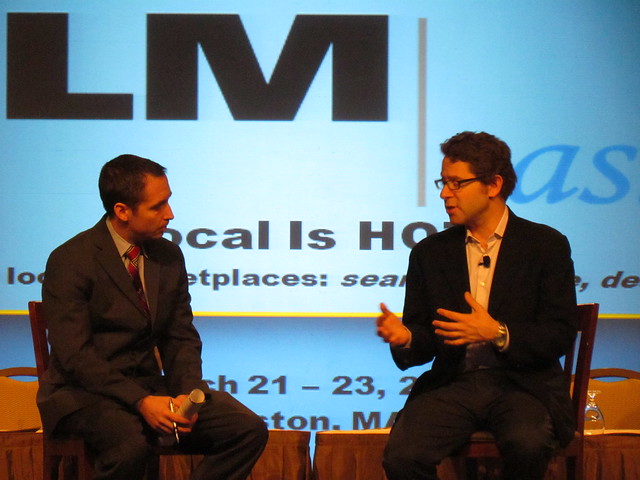
This week, we release a report that takes a closer look at some of the content that was shared on our ILM East stage last month. This is part one of a three-part series that plucks the biggest and best takeaways from the mobile sessions.
Part 1 focuses on the keynote and interview with Foursquare GM Evan Cohen. Half analysis, half interview transcript, the report looks at some of the things Foursquare is currently doing and thinking, including a deeper dive into the new features in its recent 3.0 release.
Below is part of the interview as a preview. BIA/Kelsey subscribers can log in to see the rest.
MB:Some successful mobile products are operating on the paradigm of local discovery and moving away from search, which ruled the desktop. You’ve told me that you want to be the Netflix or the Amazon of the real world. Explain.
EC: That’s one of my favorite analogies. Netflix has done such a good job knowing who you are and what movies you’ve seen, and can now make really smart movie recommendations. And, of course, Amazon is killer at that for products.
We’re trying to do that for the real world using the same principles of data analysis. We’ll continue to hone that engine, and it’s a hugely interesting and complicated mathematical challenge. I’m sure we’ll be iterating it for years but version 1, we’re very happy with.
Beyond mathematical analysis there are other interesting and useful areas that we’ll continue to mine and productize. In particular I’m thinking about social discovery and advice and recommendations from experts because sometimes you can never quite replicate the insight of the person who knows Chicago better than anyone else, or the person who has lived for six months in Paris and can tell you about the best cafes.
MB: Moving on to the merchant or advertiser end of the equation, you have 250,000 businesses signed up. Do you have any sense of how that breaks down in terms of national brands or regional franchises versus mom and pops?
EC: It’s pretty evenly split, but a big chunk of it is chains and we count things like all 3,000 RadioShacks. In terms of our interest going forward, we want to build products and focus on both constituencies because that’s how users’ experiences in the real world are evenly divided. They have very different needs, of course, and it’s hard to service both constituencies, product-wise and marketing and selling to them. But we want to service both.
MB: With your most recently launched specials, you have a pretty clear value proposition in driving in tangible foot traffic for advertisers that self serve. To augment that, do you have an interest in working with local resellers?
EC: Our existing platform directs SMBs and big chains to sign up at Foursquare.com/businesses. It’s generated a lot of activity, but it’s not enough as a business, as we scale in the coming years. So we’re thinking a lot about different channel strategies. One of them is trying to figure out how we can work with partners who already have pre-existing sales channels and relationships in local communities to distribute Foursquare specials. It’s still in the oven, but it’s very much on our minds.
MB: Panning back to a cultural standpoint, one thing that Foursquare and other companies like Groupon have ignited is deals. Clipping coupons formerly carried a cultural stigma for both users and advertisers. But now it’s a hot area as mobile is colliding with deals and group buying. What is the opportunity there?
EC: There’s huge potential, and we’re in a great position to mine those kinds of opportunities. Flash mobs and group buying dynamics in a mobile atmosphere are behind some of our [v3.0] specials, and certainly we’ll be doing more in the future. To the point about coupons becoming cool, it’s an interesting point, but I do think there is a danger of coupons being a little bit marginalized and dclass if it’s overwhelmingly about the 80 percent off, or $100 spa treatment for $50, and then [the consumer] never comes back.
So some of the front-end customer acquisition models like Groupon and the next 400 imitators are interesting to watch. But I’m not so sure how sustainable or how deep the demand is because it’s attracting kind of a weak super discount-hunting customer. We’re thinking more about loyalty. We want to help merchants to get people to come five and 10 and 20 times and not just that first time. So that’s a different way to look at the puzzle.

This Post Has 0 Comments